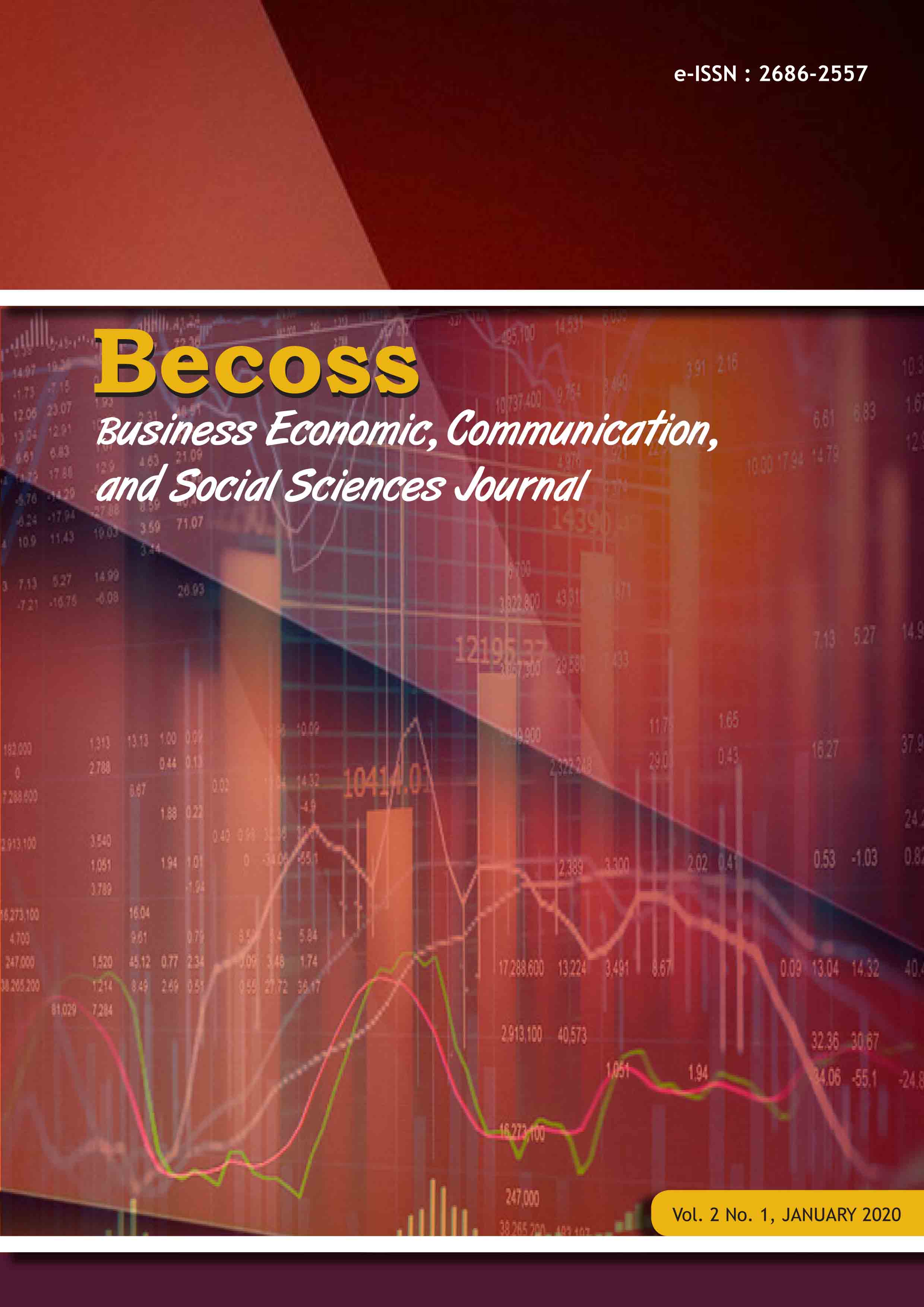Augmented Reality as Potential Alternative Media for Paperless Advertising
DOI:
https://doi.org/10.21512/becossjournal.v2i1.6077Keywords:
Advertising, Augmented Reality, Paper, Technology, NatureAbstract
Today we life in the era of technology and information. Technology has become an important tools in human daily need and being used in every field of works, including advertisement. With the rapid development of technology, information can be accessed easily in faster speed and in higher quantity. In advertising, information is one of the most important element, we want our advertisement to contain information about our products and delivered in a fastest pace as possible with enough attraction element in it, also we want our advertisement to reach as many people as possible. Ironically, in the era of technology, we still using papers in our advertisement like posters, brochures, booklets, and many other printed promotional tools. The high demand for papers gives negative impact for nature, not only for the trees and forest, but also for the ecosystem. The rapid development of technology has given us so many new alternatives media in advertising, one of them is augmented reality. Augmented reality have a lot of potential to use in many fields of works including advertising. This study attempts to give comparisons between conventional media and Augmented Reality in advertising. The interesting thing of this study is to learn the weakness and the strength of paper media and Augmented Reality in advertising, and to learn how technology can be used indirectly for preserving nature.References
Confederation of European Paper Industries (2017). Key Statistics 2017 European Pulp & Paper Industry [Booklet]. Retrieved from http://www.cepi.org/system/files/public/documents/publications/statistics/2018/210X140_CEPI_Brochure_KeyStatistics2017_WEB.pdf
Dagong Global Credit Rating (2018). 2018 Credit Outlook for the Global Paper Industry [Booklet]. Retrieved from http://en.dagongcrg.com/uploadfile/2018/0211/20180211113719767.pdf
Inglobe Technologies (2011). Augmented Reality and the Future of Printing and Publishing. Retrieved from https://www.inglobetechnologies.com/docs/whitepapers/AR_printing_whitepaper_en.pdf
Ivanova, Aliev, & Ivanov (2014). Augmented Reality Textbook for Future Blended Education. International Conference on e-Learning 2014, 130-131. Retrieved from https://www.researchgate.net/publication/322917542_Augmented_Reality_Textbook_for_Future_Blended_Education
Lemon&Orange (2014). Timberland Augmented Reality Campaign [Video]. Retrieved from https://www.youtube.com/watch?v=5TZmQPdhpak
Mourtzis and Doulas (2012). A Web-based Platform for Customer Integration in the Decentralised Manufacturing of Personalised Products. 45th CIRP Conference on Manufacturing Systems 2012, 211. doi: 10.1016/j.procir.2012.07.037
Petter, O (2018). Millenials Set to be Aoutnumbered by Gen Z Within a Year. Independent. Retrieved from https://www.independent.co.uk/life-style/millennials-gen-z-outnumbered-2019-global-population-demographic-bloomberg-a8502251.html
Sarma, B.K. (2014). Impact of Paper Industry on Environment: A Case Study of the Nagaon Paper Mill. International Conference on Trends in Economics, Humanities and Management 2014, 76. Retrieved from https://icehm.org/upload/6523ED0814009.pdf
Schechter, S. (2014). What is markerless Augmented Reality?. Marxent. Retrieved from https://www.marxentlabs.com/what-is-markerless-augmented-reality-dead-reckoning/
Scholz, J. (2018). Augmented Reality Marketing: Moving From Gimmick to Strategy. Search Engine Journal. Retrieved from https://www.searchenginejournal.com/augmented-reality-marketing-strategy/254765/#close
Shenoy and Aithal (2016). A Study on History of Paper and Possible Paper Free World. International Journal of Management. IT and Engineering, 6(1), 338-341. doi: 10.5281/zenodo.161141
Downloads
Published
How to Cite
Issue
Section
License
Authors who publish with this journal agree to the following terms:
- Authors retain copyright and grant the journal right of first publication with the work simultaneously licensed under a Creative Commons Attribution License - Share Alike that allows others to share the work with an acknowledgment of the work's authorship and initial publication in this journal.
- Authors are able to enter into separate, additional contractual arrangements for the non-exclusive distribution of the journal's published version of the work (e.g., post it to an institutional repository or publish it in a book), with an acknowledgment of its initial publication in this journal.
- Authors are permitted and encouraged to post their work online (e.g., in institutional repositories or on their website) prior to and during the submission process, as it can lead to productive exchanges, as well as earlier and greater citation of published work.
USER RIGHTS
All articles published Open Access will be immediately and permanently free for everyone to read and download. We are continuously working with our author communities to select the best choice of license options, currently being defined for this journal as follows: Creative Commons Attribution-Share Alike (CC BY-SA)






